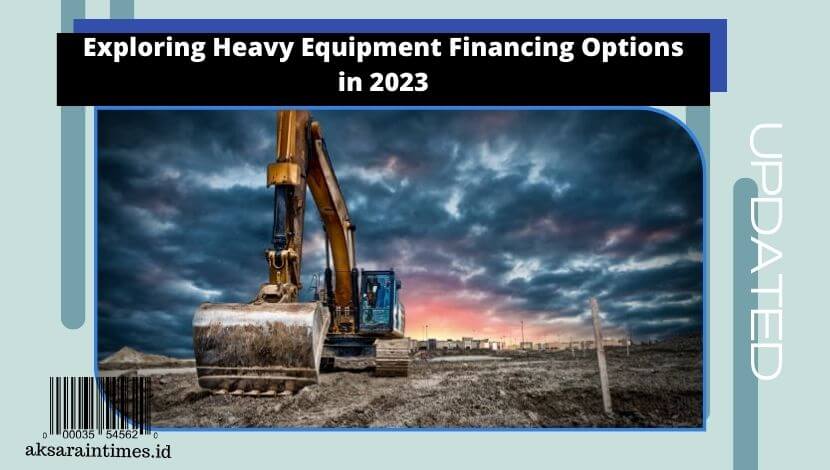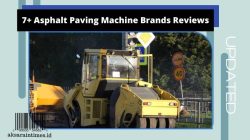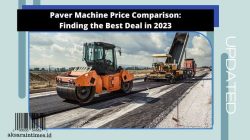Heavy Equipment Financing Options – In the world of construction, manufacturing, and various industrial sectors, heavy equipment is the backbone of productivity and progress.
These formidable machines are responsible for moving mountains, building skyscrapers, and shaping the infrastructure that underpins modern society.
However, acquiring heavy equipment is a substantial investment, one that often requires a significant financial commitment. It’s no surprise that many businesses, both large and small, turn to heavy equipment financing as a means to unlock their path to success.
Heavy equipment financing is a critical aspect of these industries, enabling companies to acquire the necessary machinery and tools to take on projects of all sizes and complexities.
n this comprehensive exploration, we delve into the world of heavy equipment financing options, shedding light on the various avenues available for businesses to secure the equipment they need to thrive.
Understanding Heavy Equipment Financing
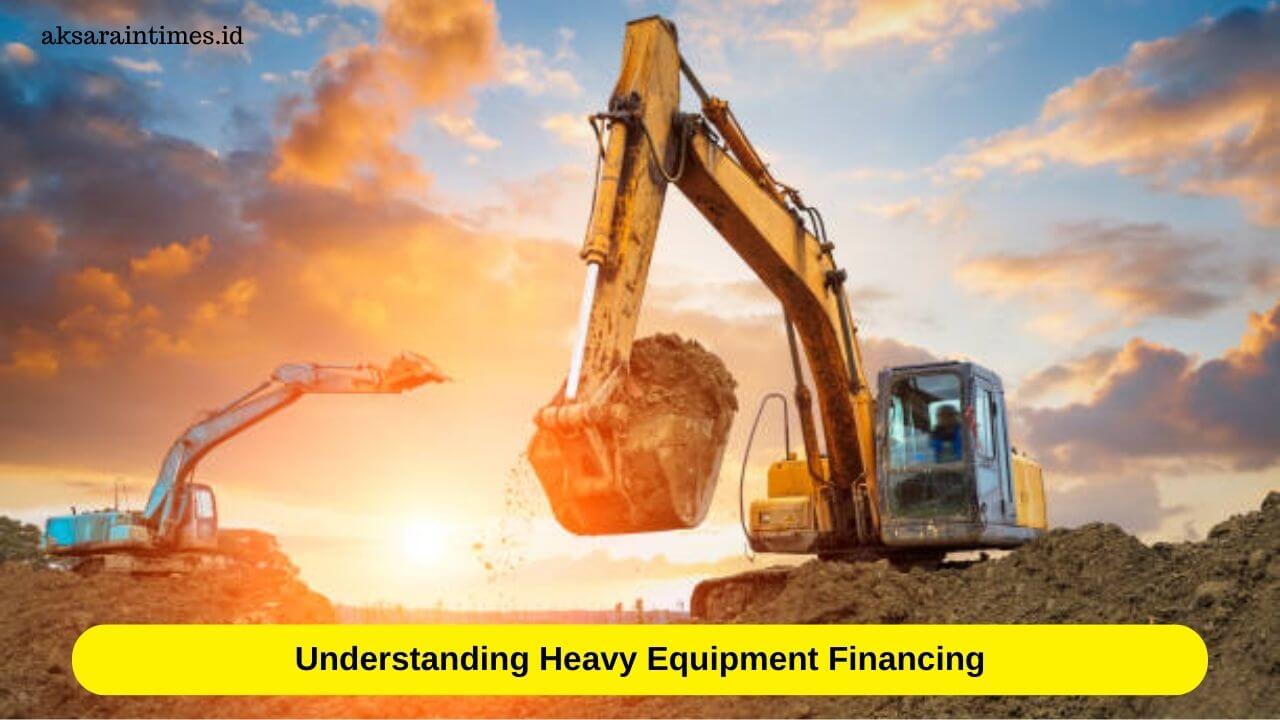
Before delving into the specifics of financing options, it’s crucial to grasp the fundamentals of heavy equipment financing.
At its core, heavy equipment financing is a financial arrangement that allows businesses to purchase or lease heavy machinery and equipment without paying the full upfront cost.
This arrangement provides companies with the flexibility to acquire the necessary equipment while preserving capital and maintaining cash flow.
The key elements of heavy equipment financing include:
Equipment Leasing
Leasing heavy equipment involves renting machinery for a predetermined period, often with the option to purchase at the end of the lease term. This option is popular among businesses that want to access the latest equipment without committing to long-term ownership.
Equipment Loans
Equipment loans, also known as equipment financing or equipment financing loans, involve borrowing funds to purchase heavy machinery outright. These loans typically come with fixed interest rates and monthly payments, allowing businesses to spread the cost over time.
Vendor Financing
Some equipment manufacturers and dealers offer financing options directly to their customers. This can streamline the equipment acquisition process, as businesses can secure both the machinery and financing from the same source.
Equipment Sale-Leaseback
In a sale-leaseback arrangement, a company sells its existing equipment to a financing provider and then leases it back.
This strategy can free up capital tied to existing assets while maintaining access to essential equipment.
Choosing Heavy Equipment Financing Options in 2023

Selecting the appropriate financing option depends on various factors, including the nature of the business, the specific equipment needed, financial goals, and creditworthiness.
Here are some key considerations for making the right choice:
Equipment Type
Different types of heavy equipment have varying lifespans and depreciation rates.
Businesses should align their financing choice with the expected usage and longevity of the machinery.
For example, leasing might be suitable for equipment that becomes obsolete quickly, while loans make sense for long-lasting assets.
Budget and Cash Flow
Assessing the company’s budget and cash flow is essential.
Leasing often requires lower upfront costs and may offer tax benefits, making it a feasible choice for businesses with limited capital.
On the other hand, loans might be suitable for companies with a stable cash flow and a desire for long-term ownership.
Creditworthiness
Lenders evaluate a company’s creditworthiness when extending financing offers.
A strong credit profile can lead to more favorable terms, including lower interest rates and higher loan amounts.
Businesses should strive to maintain good credit to access the best financing options.
Equipment Dealer Relationships
Establishing good relationships with equipment dealers can open doors to vendor financing deals.
These arrangements may offer competitive rates and expedited equipment acquisition.
Industry-Specific Considerations
Certain industries have unique financing needs and options.
For instance, construction companies may benefit from fleet financing programs that cover multiple pieces of heavy equipment.
Popular Financing Options
Now that we have a solid understanding of the basics, let’s explore some of the most popular heavy equipment financing options available to businesses:
Equipment Leasing
Equipment leasing is a versatile financing option that allows businesses to use heavy machinery without the upfront purchase cost.
There are two primary types of equipment leases:
Operating Lease
Operating leases are shorter-term agreements (usually 1-5 years) that allow businesses to use equipment without taking on the full burden of ownership.
At the end of the lease, companies can typically return the equipment, renew the lease, or purchase the equipment at a predetermined price.
Capital Lease
A capital lease, on the other hand, is a long-term arrangement that resembles equipment ownership more closely.
Businesses that opt for a capital lease often have the intent to purchase the equipment at the end of the lease term for a nominal amount.
This option allows for more straightforward accounting treatment and is suitable for equipment expected to have a long useful life.
Equipment leasing offers several advantages, including lower upfront costs, potential tax benefits, and the ability to upgrade to newer equipment at the end of the lease term.
It’s an attractive option for businesses that prefer flexibility and want to avoid the risks associated with equipment ownership.
Equipment Loans
Equipment loans, also known as equipment financing loans, are a straightforward way to acquire heavy machinery.
Here’s how it works:
- Businesses apply for an equipment loan from a lender, such as a bank or an online financing provider.
- Once approved, the lender provides funds to purchase the equipment.
- The business repays the loan through regular installments, which typically include both principal and interest.
Equipment loans offer several advantages:
- Ownership: With an equipment loan, the business owns the machinery outright from day one, which can be advantageous for long-term assets.
- Tax Benefits: In many cases, businesses can deduct interest and depreciation expenses on equipment loans, providing potential tax benefits.
- Flexibility: Equipment loans offer flexibility in terms of the equipment supplier and the choice of new or used machinery.
Vendor Financing
Vendor financing is a financing option offered directly by equipment manufacturers or dealers.
This approach simplifies the equipment acquisition process, as businesses can secure financing and equipment from a single source.
Vendor financing may include:
- Competitive Interest Rates: Some equipment dealers offer financing at competitive rates, making it an attractive option.
- Faster Approval: Vendor financing can often streamline the approval process, allowing businesses to acquire equipment quickly.
- Knowledgeable Support: Equipment dealers are experts in their field and can provide valuable insights into the equipment’s performance and maintenance.
Vendor financing is a convenient option, but businesses should still compare rates and terms to ensure they are getting the best deal.
Sale-Leaseback Arrangements
A sale-leaseback arrangement involves selling existing equipment to a financing provider and then leasing it back.
This strategy can be beneficial for businesses that want to access capital tied up in their equipment while maintaining access to the machinery.
Key advantages of sale-leaseback arrangements include:
- Liquidity: Sale-leaseback arrangements provide an infusion of capital, which can be used for various business needs, such as expansion, working capital, or debt reduction.
- Equipment Utilization: Companies can continue to use the equipment they are familiar with, avoiding the costs and learning curve associated with new machinery.
- Tax Benefits: In some cases, the leaseback payments may be tax-deductible.
Government and Non-Profit Financing Programs
Many government agencies and non-profit organizations offer financing programs to support the acquisition of heavy equipment, especially for businesses in specific industries, such as agriculture or construction.
These programs may include grants, low-interest loans, or other financial incentives to encourage investment in equipment that benefits the community or the economy.
Government and non-profit financing programs can be highly attractive due to their favorable terms, but eligibility requirements and application processes may vary.
Equipment Financing
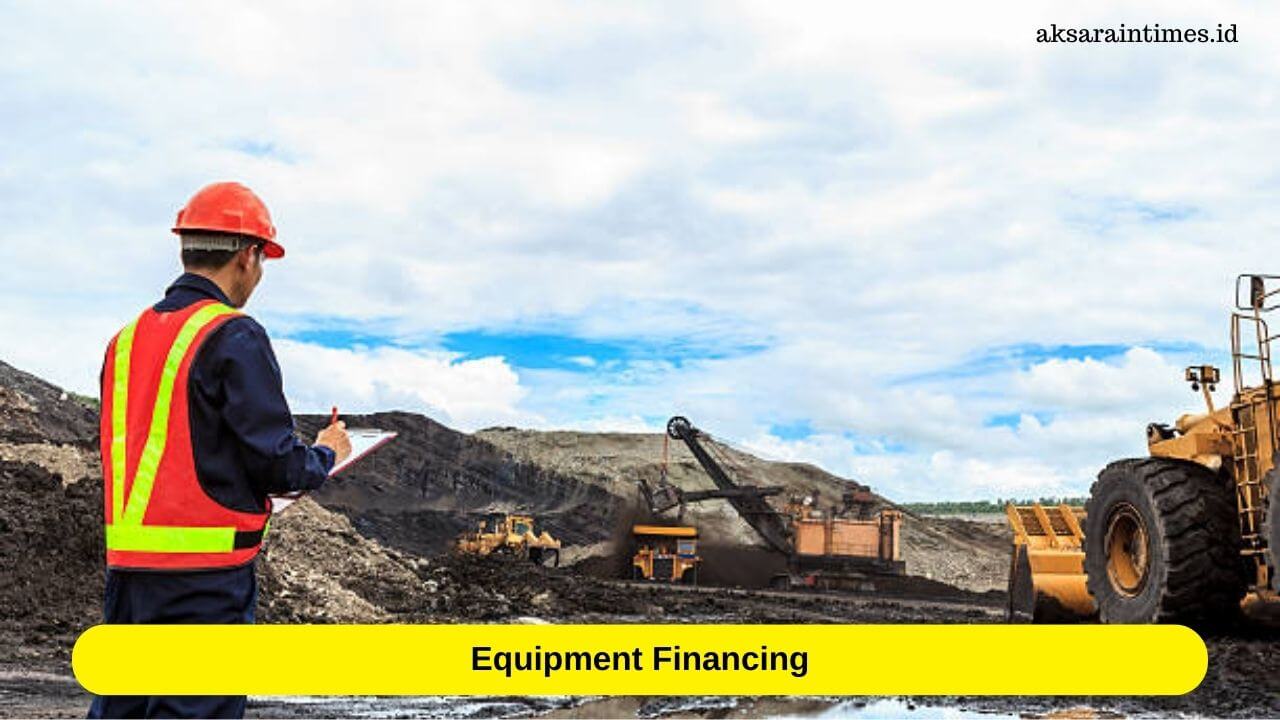
Equipment financing companies specialize in providing loans and leases tailored to the unique needs of businesses looking to acquire heavy equipment.
These companies often have industry-specific expertise and can offer flexible financing solutions.
They work with businesses to assess their requirements and financial situation, providing customized financing options.
Choosing an equipment financing company can be advantageous for businesses seeking a partner with a deep understanding of their industry and specific equipment needs.
Fleet Financing
Fleet financing is a specialized financing option for businesses that require multiple pieces of heavy equipment, often for transportation or construction fleets.
Fleet financing programs can help businesses acquire, maintain, and upgrade their entire fleet of vehicles and machinery. This approach offers economies of scale and simplifies the management of equipment.
Read More: Digging Deeper: Trenching Equipment for Rent Solutions in 2024
Conclusion
Heavy equipment financing is a vital resource for businesses across various industries, enabling them to acquire the machinery needed to succeed without depleting their working capital.
Whether through equipment leasing, equipment loans, vendor financing, sale-leaseback arrangements, government programs, equipment financing companies, or fleet financing, there are numerous options available to cater to the specific needs and financial situations of different businesses.
When exploring heavy equipment financing options, it’s crucial for businesses to conduct thorough research, evaluate their equipment requirements, and consider their financial goals and creditworthiness.
By selecting the right financing solution, companies can unlock the path to success, enhance their capabilities, and seize opportunities for growth and innovation in their respective industries.
